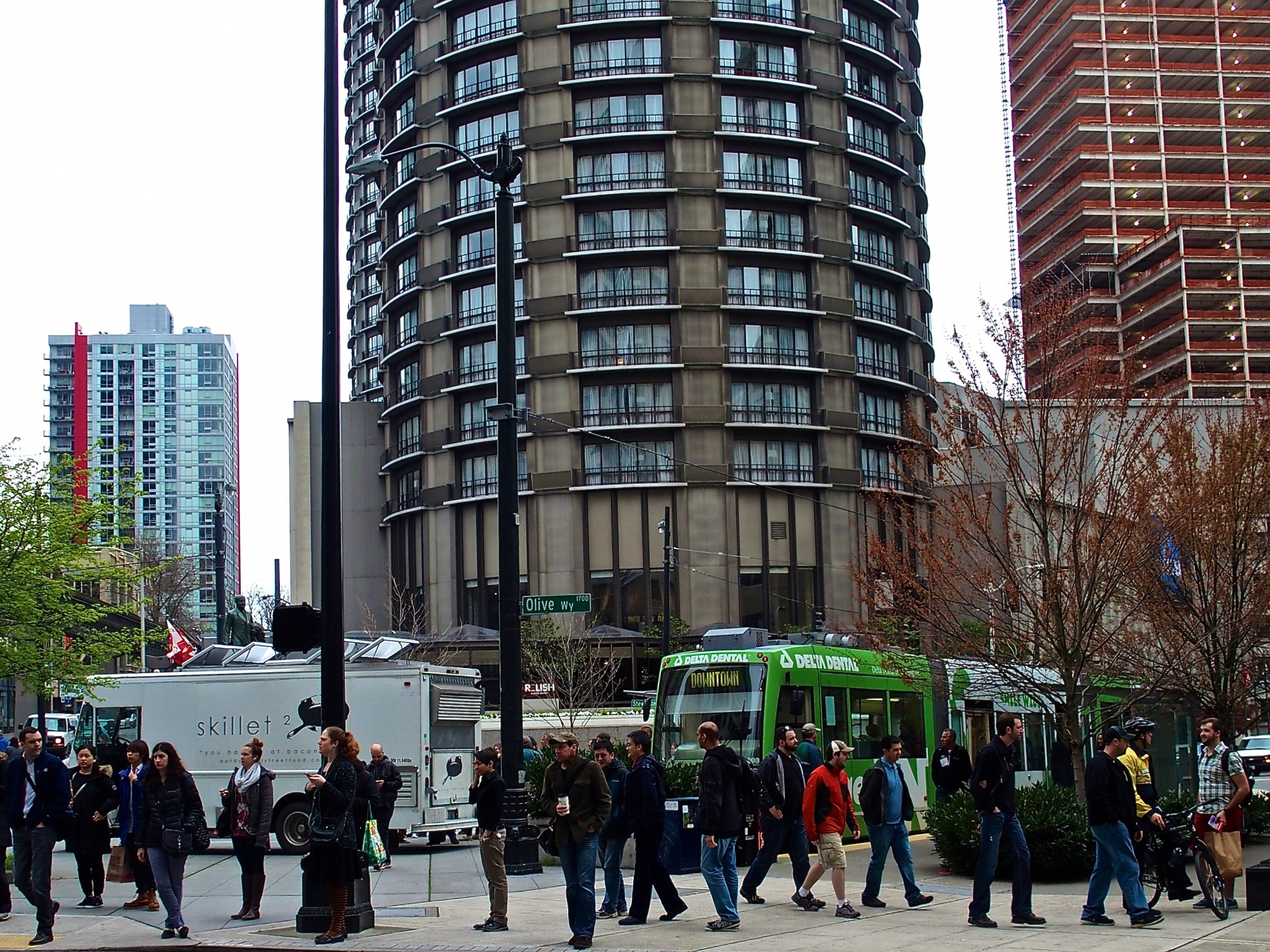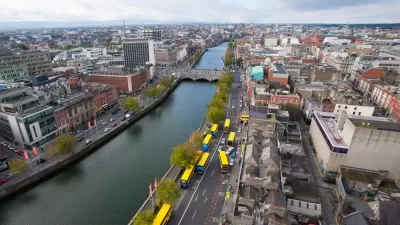Chuck Wolfe champions urban observation, emphasizing "ghosts" that are important to the authenticity of today's urban change, like oral histories among indigenous peoples passing on cultural traditions from one generation to the next.

Using his view of a Seattle urbanism trifecta---a streetcar, a food truck and one building of Amazon's new headquarters complex under construction---Chuck Wolfe reminds us what was there before, and the importance of urban observation to the urban development process.
Wolfe describes the Orpheum Theater that was demolished in 1967, and its street-level retail, and mixed office use. He advocates the role of purposeful observation and sensation in urban environments, to better understand the undercurrents and overlaps that form cities today.
This is critically important, he explains, because project advocacy, both pro and con, is often based on personal perception, observation or visual simulation, stylized in support or opposition to inevitable change. In the far-reaching essay that follows, he references pioneers from Allan Jacobs to Jan Gehl.
This approach—allowing for and explaining the stories behind our redeveloping cities—should not be viewed as antiquarian, academic or obstructionist, he says. Rather, it enhances the human capacity to simply look and remember:
[M]odern-day tool kits are lacking, in my opinion, because they often don't fully equip leaders in policy and decision-making to understand the multifaceted urban world. While we have recipes for code-drafting and repairing suburbs and sprawl, we don't have enough guides for public officials or staff to be confident in legislating many intrinsic elements of a successful urbanism... such as deriving place from placelessness, retaining authenticity, livability, intensity, integration, diverse public spaces and ways.
He adds several ideas for how the now-missing Orpheum Theater--however intangible and historical--could play a role in urban redevelopment or revitalization and more meaningful attention to the uniqueness of the setting, asking "does the ghost still have game?"
Wolfe concludes:
In sum, when framing urban issues, describing cities or developing profiles of a specific place, the detailed variations in the individual perceptions of urban dwellers and observers should not be lost. These subtle messages are often spurred by ordinary urban landscapes, icons, emblems, symbols and "context clues" within ready view, contributing to an understanding of why a place looks and feels like it does today, and what might now be missing but potentially renewed.
FULL STORY: Using Urban Observation to "Ghost-Bust" Cities

Planetizen Federal Action Tracker
A weekly monitor of how Trump’s orders and actions are impacting planners and planning in America.

Map: Where Senate Republicans Want to Sell Your Public Lands
For public land advocates, the Senate Republicans’ proposal to sell millions of acres of public land in the West is “the biggest fight of their careers.”

Restaurant Patios Were a Pandemic Win — Why Were They so Hard to Keep?
Social distancing requirements and changes in travel patterns prompted cities to pilot new uses for street and sidewalk space. Then it got complicated.

Platform Pilsner: Vancouver Transit Agency Releases... a Beer?
TransLink will receive a portion of every sale of the four-pack.

Toronto Weighs Cheaper Transit, Parking Hikes for Major Events
Special event rates would take effect during large festivals, sports games and concerts to ‘discourage driving, manage congestion and free up space for transit.”

Berlin to Consider Car-Free Zone Larger Than Manhattan
The area bound by the 22-mile Ringbahn would still allow 12 uses of a private automobile per year per person, and several other exemptions.
Urban Design for Planners 1: Software Tools
This six-course series explores essential urban design concepts using open source software and equips planners with the tools they need to participate fully in the urban design process.
Planning for Universal Design
Learn the tools for implementing Universal Design in planning regulations.
Heyer Gruel & Associates PA
JM Goldson LLC
Custer County Colorado
City of Camden Redevelopment Agency
City of Astoria
Transportation Research & Education Center (TREC) at Portland State University
Camden Redevelopment Agency
City of Claremont
Municipality of Princeton (NJ)



























